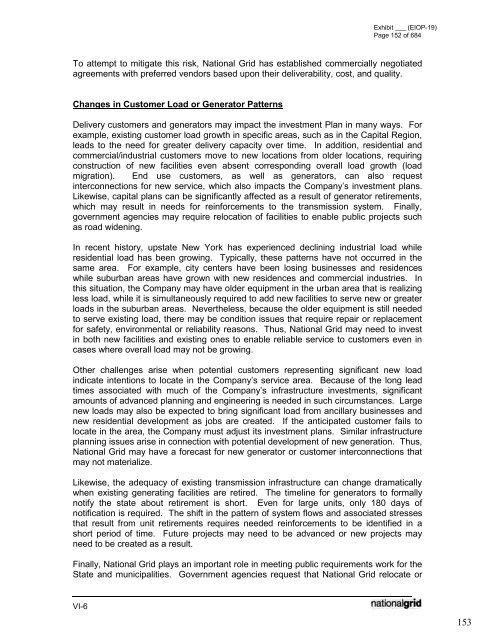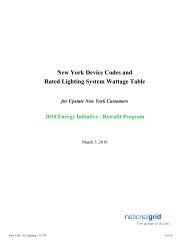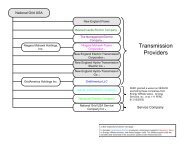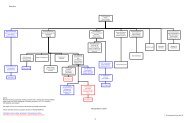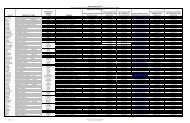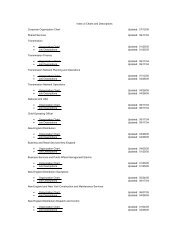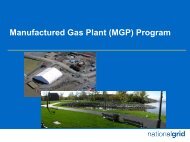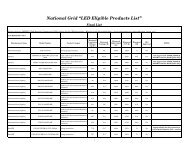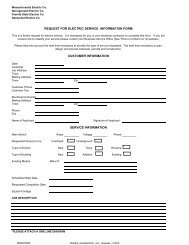January 2012 Capital Investment - National Grid
January 2012 Capital Investment - National Grid
January 2012 Capital Investment - National Grid
You also want an ePaper? Increase the reach of your titles
YUMPU automatically turns print PDFs into web optimized ePapers that Google loves.
Exhibit ___ (EIOP-19)Page 152 of 684To attempt to mitigate this risk, <strong>National</strong> <strong>Grid</strong> has established commercially negotiatedagreements with preferred vendors based upon their deliverability, cost, and quality.Changes in Customer Load or Generator PatternsDelivery customers and generators may impact the investment Plan in many ways. Forexample, existing customer load growth in specific areas, such as in the <strong>Capital</strong> Region,leads to the need for greater delivery capacity over time. In addition, residential andcommercial/industrial customers move to new locations from older locations, requiringconstruction of new facilities even absent corresponding overall load growth (loadmigration). End use customers, as well as generators, can also requestinterconnections for new service, which also impacts the Company’s investment plans.Likewise, capital plans can be significantly affected as a result of generator retirements,which may result in needs for reinforcements to the transmission system. Finally,government agencies may require relocation of facilities to enable public projects suchas road widening.In recent history, upstate New York has experienced declining industrial load whileresidential load has been growing. Typically, these patterns have not occurred in thesame area. For example, city centers have been losing businesses and residenceswhile suburban areas have grown with new residences and commercial industries. Inthis situation, the Company may have older equipment in the urban area that is realizingless load, while it is simultaneously required to add new facilities to serve new or greaterloads in the suburban areas. Nevertheless, because the older equipment is still neededto serve existing load, there may be condition issues that require repair or replacementfor safety, environmental or reliability reasons. Thus, <strong>National</strong> <strong>Grid</strong> may need to investin both new facilities and existing ones to enable reliable service to customers even incases where overall load may not be growing.Other challenges arise when potential customers representing significant new loadindicate intentions to locate in the Company’s service area. Because of the long leadtimes associated with much of the Company’s infrastructure investments, significantamounts of advanced planning and engineering is needed in such circumstances. Largenew loads may also be expected to bring significant load from ancillary businesses andnew residential development as jobs are created. If the anticipated customer fails tolocate in the area, the Company must adjust its investment plans. Similar infrastructureplanning issues arise in connection with potential development of new generation. Thus,<strong>National</strong> <strong>Grid</strong> may have a forecast for new generator or customer interconnections thatmay not materialize.Likewise, the adequacy of existing transmission infrastructure can change dramaticallywhen existing generating facilities are retired. The timeline for generators to formallynotify the state about retirement is short. Even for large units, only 180 days ofnotification is required. The shift in the pattern of system flows and associated stressesthat result from unit retirements requires needed reinforcements to be identified in ashort period of time. Future projects may need to be advanced or new projects mayneed to be created as a result.Finally, <strong>National</strong> <strong>Grid</strong> plays an important role in meeting public requirements work for theState and municipalities. Government agencies request that <strong>National</strong> <strong>Grid</strong> relocate orVI-66153


